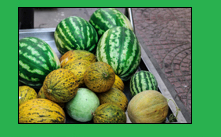|
Famous Quilts
“Every now and then there comes to light one of these old quilts of the most exquisite loveliness, in which the needlework is almost painful in its exactness. Such treasures are worthy of study and imitation, and are deserving of careful preservation for the inspiration of future generations of quilters.”
- Marie D. Webster, Hoosier quilter, author of
Quilts - Their Story and How to Make Them
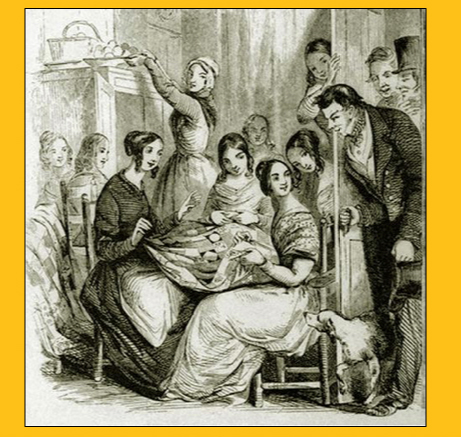
Some of these quilts you may be familiar with; others not so much unless you’ve been reading the Quilters Club books. Many of the mysteries encountered by Maddy and her fellow sleuths have centered around old historical quilts.
• The Godey Quilt – The appliqué quilt composed of fifteen fabric portraits of men and women in fashionable mid-nineteenth century attire, an original design that wasn’t representative of quilts of that era. It took its name from the appliqués’ resemblance to fashion illustrations found in the popular 19th-Century magazine, Godey’s Lady’s Book. The quilt was created in 1933-1934 by Mildred Potter Lissauer of Louisville, Kentucky.

• The Frank Leslie Quilt – This was made up of 15 appliquéd blocks, each an illustration from Leslie’s Weekly depicting an attractive lady in her finery. Created by Helga Hoople, ca. 1925.
• The Second Renaissance Quilt – The famous Reconciliation Quilt’s mate. Lucinda Ward Honstain, a resident of Brooklyn, NY, sewed these magnificent quilts in 1867. Each quilt consists of 40 squares (with a wider swatch in the center) that depicted life during and after the Civil War – almost like storytelling panels in a comic book.
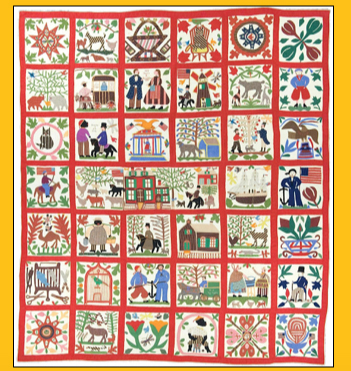
• The Beasley Heritage Quilt – A questionable pictorial quilt on display at the Beasley Heritage Museum in Massachusetts. It is purported to visualize the founding of Caruthers Corners.
• The Jinks Map Quilt – Listed as Quilt No. 17. A map quilt attributed to Ursula Andrea Jinks, ca. 1830. A winding swath of blue silk to represent the river. Two fabric houses positioned next to each other. Green trees shapes appliquéd to the light-gray cotton background. A wide silk binding to finish off all four borders.
• The “Uncle Sam” Santa Quilt – A patchwork quilt designed by Sarah Soldemier ca. 1852 (based on an invoice). Original design of Santa in a stars-and-stripe costume, eleven years before Thomas Nast drew a similar image for Harper’s Weekly.
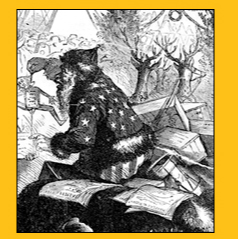
• Manta da Cultura (Patchwork for Culture) – The current Guinness world record holder, a 6.2-acres (270,174 sq. ft.) patchwork quilt in Portugal. Completed in June 2000 by Realizar Eventos Especiais of Parque da Cidade, Porto.
• The Caruthers Corners Friendship Quilt – Maddy proposed that they involve the whole town in making a scrap quilt that would cover the Town Square – 10 acres in all – which would put it into the Guinness Book of World Records. However, that ambitious project got sidetracked when an EF3 tornado ripped through Caruthers Corners.
• The Wilkins Witch Quilt – Made by a local witch-woman back in 1897. Depicts a battle between Heaven and Hell. Decorated with runic symbols. Once hung in the Caruthers Corners Town Hall.
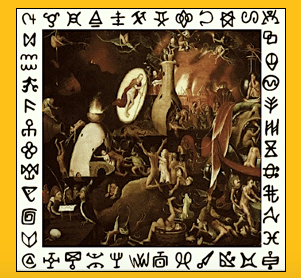
• “Pink Dogwoods in Appliqué” – Marie Webster’s 1927 design of light pink flowers in 4 baskets, forming a large wreath. In the border, garlands of blossoms curves around the scalloped edges. The quilt was featured in the September 1927 issue of Ladies’ Home Journal as part of the Webster Family Collection.
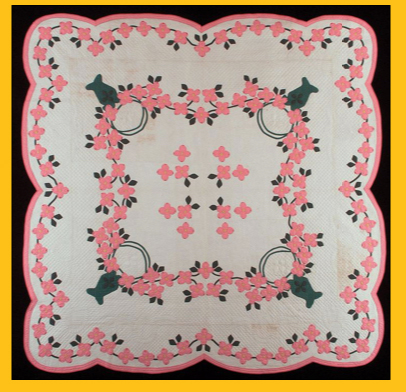
• Amandine Purdue Quilt, 1899 – An unremarkable quilt with a flame-like design. However, it was stuffed with rare Grand Watermelon banknotes. The currency amounted to $73,512 in face value, but was worth more than $200 million to numismatists and collectors.
• “Shooting Star Quilt, 1898” – Mary Louise Madison’s 1898 Pictorial Quilt showing the famous Madison Meteorite as it struck a farm silo near Caruthers Corners.
|
